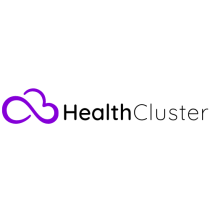
The shift to e-invoicing is the biggest change in financial compliance for healthcare providers in E-Invoice Dubai and the wider UAE. It’s not just an accounting update; it’s a necessary step to integrate your clinical and financial operations fully.
At Health Cluster, we understand that hospitals, polyclinics, and specialty centers in the MENA region have unique needs. Our solutions are built right into your EMR/HIS (Electronic Medical Record/Hospital Information System) to make e-invoice implementation seamless.
The E-Invoicing Framework in UAE: How It Works
The e-invoicing framework in UAE is designed for high security and speed. It uses a modern approach called the Decentralized Continuous Transaction Control and Exchange (DCTCE) model, based on the global Peppol standard.
The Five-Corner Model
This model ensures every e-invoice is validated and reported instantly. The five corners are:
- Supplier (Your Hospital/Clinic): Generates the invoice data in your EMR/HIS.
- Supplier’s Accredited Service Provider (ASP): This is where Health Cluster steps in. We validate the data, convert it to the required format (PINT AE), and send it securely.
- Buyer (Insurance Company/Government): The final recipient of the bill.
- Buyer’s ASP: Receives the validated invoice and delivers it to the customer.
- Federal Tax Authority (FTA): Receives a copy of the tax data from the ASPs for near real-time monitoring and oversight.
Why this matters to you: You cannot send the e-invoice directly. You must use an FTA-accredited ASP. Health Cluster acts as your specialized ASP connector, guaranteeing your data is correct before it even reaches the network.
Scope of E-Invoicing: Who and What is Included?
Understanding the scope of e-invoicing is crucial for proper system setup, especially in healthcare, where you deal with different payment types.
In-Scope Transactions (Mandatory E-Invoice):
- Business-to-Business (B2B): This is your most frequent transaction. All invoices are sent to insurance companies for patient claims.
- Business-to-Government (B2G): All invoices sent to government entities in Dubai and Abu Dhabi (like DHA, SEHA, MOHAP) for services provided.
Out-of-Scope (For Now):
- Business-to-Consumer (B2C): Bills and receipts issued directly to patients paying cash are currently excluded. However, this could change, so your system should be ready.
- Imports: Invoices from foreign vendors are generally outside the scope.
For your hospital: Almost all your high-volume billing (insurance and government claims) falls under the mandatory e-invoicing scope.
Mandatory Fields of E-Invoicing in UAE: The PINT AE Standard
The e-invoice in UAE must be in a structured digital format called PINT AE (Peppol International for UAE). This requires that specific mandatory fields of e-invoicing are present in the exact format defined by the FTA.
| CATEGORY | MANDATORY FIELD EXAMPLES |
| Identification | Unique Invoice Number, Issue Date & Time, Invoice Type Code (like Tax Invoice) |
| Parties | Seller’s & Buyer’s TRN, Legal Name, and Electronic Address (Peppol ID) |
| Line Items | Service/Item Description, Quantity, Unit Price, VAT Rate/Category |
| Summary | Total Taxable Amount, Total VAT Amount, Gross Invoice Total |
| Technical | Digital Signature/Hash, ASP Identifier, PINT AE Specification ID |
If any of these mandatory fields are missing or incorrect, your e-invoice will fail the ASP validation check and be rejected, leading to e-invoicing non-compliance and payment delays.
The Health Cluster EMR/HIS Advantage
For healthcare providers in Dubai and Abu Dhabi, e-invoicing is not just an IT project—it’s a clinical-financial integration.
Using a separate, non-integrated billing tool is a major risk. Your e-invoicing software must talk to your clinical data system seamlessly.
Health Cluster’s integrated approach offers superior benefits:
- Automated Revenue Cycle: Once a doctor finalizes a patient’s chart in the EMR, the e-invoice is instantly created, checked for compliance, and submitted through the secure network. This speeds up your revenue cycle management dramatically.
- NABIDH/Malaffi & FTA Compliance in One: Our system ensures you meet regional health data exchange standards and the e-invoicing requirements in UAE at the same time. No more managing two separate compliance processes.
- Error Reduction: By pulling service codes directly from the clinical record, we eliminate manual data entry in billing, drastically reducing errors that lead to claim rejections.
- Scalability for the MENA Region: Whether you’re a multi-specialty polyclinic in Dubai or a large hospital group operating across the MENA region (like KSA’s ZATCA compliance), our platform is ready to scale with you.
Conclusion
The e-invoice Dubai mandate is a clear sign that the UAE is moving to a completely digital economy. For healthcare organizations, like hospitals, large clinics, and specialty centers, this is a chance to upgrade your technology and automate your most difficult process: revenue cycle management.
By choosing Health Cluster, you are not just buying e-invoicing software; you are partnering with an expert who can seamlessly manage your EMR, HIS, and complex tax compliance. We turn a regulatory requirement into a massive operational advantage—reducing errors, speeding up payments, and guaranteeing your compliance.
Don’t wait until the deadline to face the consequences of e-invoicing non-compliance. The time to act is now!


